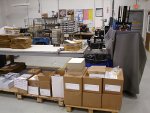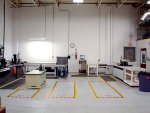David Dodd
Well-known member
When introducing the subject of "lean manufacturing," it can be difficult to know where to begin. But I can't think of a better place to start than with the topic of waste. Waste is the mortal enemy of lean. Lean experts often differ when it comes to the specific ways to implement and use lean, but all agree that the ultimate purpose and objective of lean is the avoidance or elimination of waste in all business operations.
In the lean world, waste is any activity or condition that consumes resources but creates no value for customers. So, what activities create or add value? For a product, an activity creates value if it is directly involved in physically transforming raw materials into the finished product and getting the finished product to the customer. For a service, an activity creates value if it is directly involved in actually rendering the service. All other activities add no value and therefore create waste. Some of these non-value-adding activities are essential. They may be required by law or be unavoidable given the limitations of current technologies. But, most non-value-adding activities can be eliminated or at least reduced.
When thinking about waste and value, it's important to remember that value must be defined from the customer's perspective. An activity may have value for you, but create no value for your customer. One important litmus test for an activity is this: If you tried to charge your customer specifically for performing the activity, would he or she be willing to pay for it?
So, think about the activities that you perform every day and ask which of those activities actually create value for your customers. If you're already using lean in your business, please share with the forum how you've approached the task of identifying and then reducing or eliminating non-value-adding activities and the waste they create.
In the lean world, waste is any activity or condition that consumes resources but creates no value for customers. So, what activities create or add value? For a product, an activity creates value if it is directly involved in physically transforming raw materials into the finished product and getting the finished product to the customer. For a service, an activity creates value if it is directly involved in actually rendering the service. All other activities add no value and therefore create waste. Some of these non-value-adding activities are essential. They may be required by law or be unavoidable given the limitations of current technologies. But, most non-value-adding activities can be eliminated or at least reduced.
When thinking about waste and value, it's important to remember that value must be defined from the customer's perspective. An activity may have value for you, but create no value for your customer. One important litmus test for an activity is this: If you tried to charge your customer specifically for performing the activity, would he or she be willing to pay for it?
So, think about the activities that you perform every day and ask which of those activities actually create value for your customers. If you're already using lean in your business, please share with the forum how you've approached the task of identifying and then reducing or eliminating non-value-adding activities and the waste they create.












